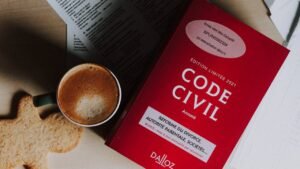

Norwegian Adjectives for Art and Creativity
Norwegian adjectives play a crucial role in the world of art and creativity. They have the power to enhance and enrich artistic expression, adding depth, emotion, and nuance to creative works. Whether you are a painter, writer, musician, or any other type of artist, understanding and utilizing Norwegian adjectives can greatly enhance your ability to communicate your artistic vision.
Table of Contents
ToggleKey Takeaways
- Norwegian adjectives play a crucial role in describing art and creativity.
- Adjectives can add depth and emotion to your artwork and creative writing.
- Common Norwegian adjectives used in art and creativity include “vakker” (beautiful), “kreativ” (creative), and “unik” (unique).
- Learning and using Norwegian adjectives can help you express your creativity more effectively.
- Famous Norwegian artists have used adjectives to great effect in their work.
Understanding the Importance of Adjectives in Art and Creativity
Adjectives are words that describe or modify nouns. They provide additional information about the qualities, characteristics, and attributes of the noun they are associated with. In the context of art and creativity, adjectives can be used to describe the visual elements of a painting, the emotions conveyed in a piece of music, or the atmosphere created in a piece of writing.
Adjectives have the power to evoke specific emotions or create vivid imagery in the minds of the audience. They can help artists and creatives convey their intended message more effectively and engage their audience on a deeper level. By carefully selecting and using adjectives, artists can create a more immersive and impactful experience for their viewers, readers, or listeners.
Common Norwegian Adjectives Used to Describe Art and Creativity
There are several common Norwegian adjectives that are frequently used to describe art and creativity. These adjectives capture various aspects of artistic expression and can be used to convey different emotions or qualities. Some examples include:
1. Vakker (beautiful) – This adjective is often used to describe visually appealing artwork or creative works that evoke a sense of beauty.
2. Kreativ (creative) – This adjective is used to describe works that demonstrate originality, innovation, and imagination.
3. Stemningsfull (atmospheric) – This adjective is used to describe works that create a particular mood or atmosphere.
4. Uttrykksfull (expressive) – This adjective is used to describe works that effectively convey emotions or ideas.
5. Inspirerende (inspiring) – This adjective is used to describe works that evoke a sense of inspiration or motivation.
How Norwegian Adjectives Can Help You Express Your Creativity
| Adjective | Definition | Example |
|---|---|---|
| Hyggelig | Friendly, cozy, comfortable | “The hyggelig atmosphere of the coffee shop inspired my creativity.” |
| Kreativ | Creative | “I felt more kreativ after taking a walk in the park.” |
| Fargerik | Colorful | “The fargerik painting caught my eye and sparked my imagination.” |
| Eventyrlig | Fantastical, adventurous | “The eventyrlig story inspired me to write my own fantasy novel.” |
| Uvanlig | Unusual, unique | “The uvanlig design of the building inspired me to think outside the box.” |
Norwegian adjectives can be a powerful tool for artists and creatives to express themselves. By using adjectives, artists can add depth and emotion to their creative works, allowing them to communicate their ideas and feelings more effectively.
For example, a painter may use adjectives like “vibrant” or “bold” to describe the colors they use in their artwork, conveying a sense of energy and intensity. A writer may use adjectives like “haunting” or “melancholic” to describe the atmosphere of a story, evoking specific emotions in the reader. By carefully selecting and using adjectives, artists can create a more immersive and impactful experience for their audience.
Using Norwegian Adjectives to Add Depth and Emotion to Your Artwork
When creating artwork, whether it’s a painting, sculpture, or photograph, Norwegian adjectives can be used to add depth and emotion to the piece. By incorporating descriptive adjectives into your artistic process, you can enhance the overall impact of your work.
For example, if you are a painter working on a landscape painting, you could use adjectives like “serene,” “majestic,” or “breathtaking” to describe the scenery you are trying to capture. These adjectives not only provide visual cues for the viewer but also evoke specific emotions and create a more immersive experience.
Similarly, if you are a writer working on a poem or short story, you can use Norwegian adjectives to create vivid imagery and convey specific emotions. For instance, instead of simply describing a character as “sad,” you could use adjectives like “heartbroken,” “desolate,” or “anguished” to paint a more nuanced picture of their emotional state.
Tips for Incorporating Norwegian Adjectives into Your Creative Writing

If you are a writer looking to incorporate Norwegian adjectives into your creative writing, here are a few tips to help you get started:
1. Expand your vocabulary: Take the time to learn new Norwegian adjectives and their meanings. This will give you a wider range of words to choose from when describing your characters, settings, and emotions.
2. Use adjectives sparingly: While adjectives can add depth and emotion to your writing, it’s important not to overuse them. Select the most impactful adjectives that best capture the essence of what you are trying to convey.
3. Show, don’t tell: Instead of simply telling your readers how a character feels or what a scene looks like, use descriptive adjectives to show them. This will create a more immersive experience for your readers and allow them to form their own emotional connections with your work.
The Role of Norwegian Adjectives in Art Criticism and Analysis
Norwegian adjectives also play a significant role in art criticism and analysis. When analyzing and critiquing artwork, critics often use adjectives to describe the various elements of the piece and evaluate its overall effectiveness.
For example, an art critic may use adjectives like “dynamic,” “expressive,” or “thought-provoking” to describe a painting that evokes strong emotions and engages the viewer. On the other hand, they may use adjectives like “derivative,” “superficial,” or “uninspired” to critique a piece that lacks originality or fails to make a meaningful impact.
By using descriptive adjectives in art criticism and analysis, critics can provide a more nuanced understanding of the artwork and its artistic merits. Adjectives help to articulate the critic’s subjective experience of the artwork while also providing a framework for evaluating its technical and conceptual aspects.
How to Learn and Use Norwegian Adjectives for Art and Creativity
If you are interested in learning and using Norwegian adjectives for art and creativity, there are several resources available to help you.
1. Language learning apps: There are numerous language learning apps available that can help you expand your vocabulary and practice using Norwegian adjectives in context. Some popular options include Duolingo, Babbel, and Memrise.
2. Online courses: Many online platforms offer Norwegian language courses that can help you develop your language skills, including the use of adjectives. Websites like Udemy and Coursera offer a wide range of courses taught by experienced instructors.
3. Language exchange programs: Participating in language exchange programs can provide an opportunity to practice speaking and writing in Norwegian with native speakers. This can help you gain confidence in using adjectives and other aspects of the language.
Examples of Famous Norwegian Artists and their Use of Adjectives
Norway has a rich artistic tradition, with many famous artists who have made significant contributions to various creative fields. Here are a few examples of famous Norwegian artists and how they use adjectives in their work:
1. Edvard Munch: Munch is known for his emotionally charged paintings that often depict themes of anxiety, despair, and isolation. His use of adjectives like “haunting,” “disturbed,” and “anguished” in describing his work reflects the intense emotions he sought to convey.
2. Henrik Ibsen: Ibsen is considered one of the greatest playwrights in history, known for his realistic and socially critical dramas. His use of adjectives like “provocative,” “controversial,” and “powerful” in describing his plays reflects the impact they had on audiences and society at large.
3. Sigrid Undset: Undset was a Nobel Prize-winning author known for her historical novels set in medieval Norway. Her use of adjectives like “vivid,” “evocative,” and “authentic” in describing her settings and characters reflects her meticulous attention to detail and commitment to historical accuracy.
Embrace the Power of Norwegian Adjectives for Your Art and Creativity
In conclusion, Norwegian adjectives are a valuable tool for artists and creatives looking to enhance their work. By understanding and utilizing these adjectives, artists can add depth, emotion, and nuance to their creative works, allowing them to effectively communicate their artistic vision.
Whether you are a painter, writer, musician, or any other type of artist, embracing the power of Norwegian adjectives can greatly enhance your ability to express yourself and engage your audience. So don’t be afraid to explore the world of Norwegian adjectives and incorporate them into your art and creativity. Embrace the richness and beauty they bring to your work, and watch as your artistic expression reaches new heights.

Norwegian A1-A2
Course Overview The Norwegian A1-A2 course is an online program focused on teaching essential Norwegian grammar and vocabulary. It includes a variety of materials and topics, with opportunities to interact with a Norwegian teacher entirely online. Curriculum Highlights The course covers key areas such as grammar and vocabulary and topics such as family, daily life, education, work, traditions, and leisure activities. Who Should Enroll? This course is perfect for beginners or those at the A1 or A2 levels who want to improve their Norwegian skills. What You Get Access to the full Norwegian A1-A2 course. A monthly 1-hour online conversation with a teacher. Many written and oral assignments. Comprehensive information on Norwegian grammar, Norwegian vocabulary and how to use them, important sentence structures, etc. Tips on additional resources to further enhance your Norwegian learning.
0 students enrolled
Last updated Dec 10th, 2024
If you want to learn Norwegian, you can register for classes here. We look forward to hearing from you and helping you become fluent in Norwegian.





